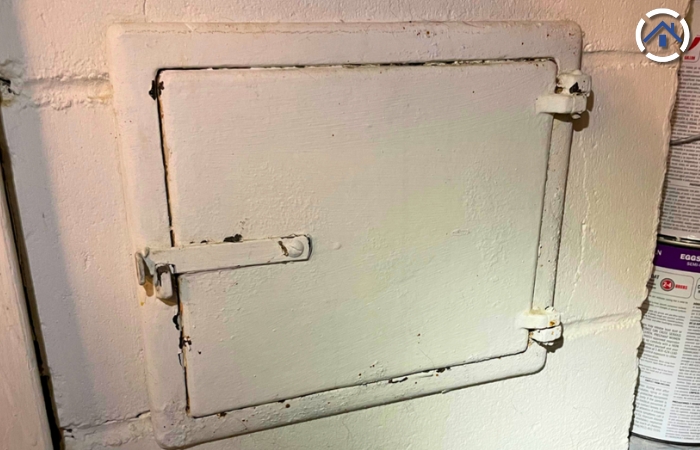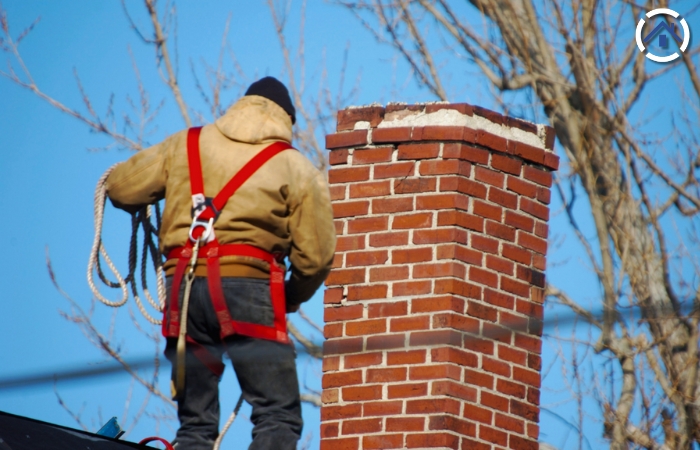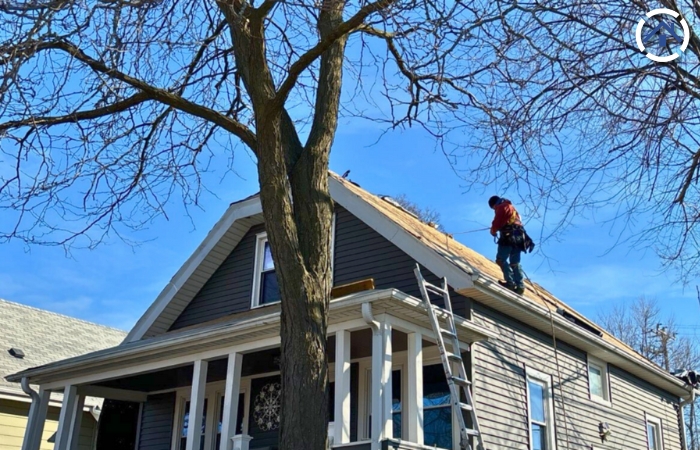
Have you ever strolled through a neighborhood or visited a home and noticed the presence of chimneys without fireplaces? It makes you wonder. What's the purpose of having a chimney when there's no warm fire to enjoy? Why keep them around? Are they purely for show, or is there a hidden purpose that we might be missing?
Perhaps there's a reason these chimneys are still standing, and it’s good to explore whether there's more to their existence than meets the eye.
Fireplaces may not be as popular for heating homes nowadays, but they still serve other purposes, such as:
Fireplaces have found a new purpose as essential components of ventilation systems. When your furnace or water heater is in use, the combustion process produces gases that need to be released safely. The fireplace chimney acts as a conduit for these gases, channeling them outside and preventing them from accumulating indoors. This repurposing enhances the overall safety and efficiency of modern heating systems.
In some homes, especially in the basement, you might notice a small door within the chimney. This isn't just a decorative feature; it serves a functional purpose. The chimney becomes a breather, ensuring fresh air can move in and out, contributing to the home's overall ventilation. The door allows for the circulation of air within the basement. Adequate air circulation is crucial for maintaining a healthy environment, preventing stagnation and potential issues like mold growth inside your home.

Here are some of the reasons why chimneys are often not removed:
One primary reason for not removing a chimney is the cost. Sealing a chimney is often a more economical option than complete removal, as removing a chimney involves intricate work, potentially requiring structural modifications and repairs to the roof and adjacent walls.
On the other hand, sealing a chimney is a simpler process that involves closing it off, which is generally more budget-friendly. This cost-effectiveness makes sealing an attractive option, especially when the chimney is no longer in use for its original purpose.
Chimneys are important parts of a building's structure. If removed, they can leave awkward and unused spaces that are difficult to fill or repurpose. Some chimneys also offer structural support, particularly in older homes. Taking them out without proper reinforcement could make the home less stable. To avoid these issues and maintain the integrity of the structure, homeowners often choose to keep the chimney in place and seal it rather than remove it entirely.
Chimneys are often designed as integral architectural elements of a house, and their removal can alter the home's external appearance, disrupting the original aesthetic harmony. Homeowners may choose to retain the chimney for its visual appeal, even if it's no longer in use. This decision helps preserve the historical or architectural character of the house.
Even if you don't have a fireplace, cleaning your chimney is still important. Here's why:
1. Residual Buildup
Chimneys are not exclusive to fireplaces; they are part of the ventilation system for various heating appliances, like furnaces and water heaters. Over time, these appliances produce byproducts that can accumulate in the chimney. Even if you don't use a traditional fireplace, the chimney may still have residues such as soot, debris, or creosote (a tar-like substance). Regular cleaning helps prevent these materials from building up and posing a potential fire hazard.
2. Air Quality
A dirty chimney can affect the air quality inside your home. The accumulated debris may contain allergens or pollutants that can be released into the air when the heating system is in use. Regular cleaning ensures that the chimney functions efficiently, reducing the risk of indoor air pollution and promoting a healthier living environment.
3. Pest Prevention
Chimneys can attract animals and birds looking for shelter. Debris and leaves in an uncapped chimney can provide nesting opportunities. Regular cleaning and maintenance help remove potential nesting materials, reducing the likelihood of pests entering your home through the chimney.
4. Structural Integrity
Even without a fireplace, a chimney contributes to the structural integrity of your home. A neglected chimney may develop issues like cracks or deterioration over time. Regular cleaning and inspections allow you to identify and address structural concerns before they become serious problems, helping to maintain the overall stability of your home.

Here are key reasons why it's crucial to ensure proper ventilation for chimneys, even when they are not in use:
1. Preventing Moisture Issues
An unused chimney can allow moisture to enter your home. Rainwater and snow can find their way down the chimney, leading to dampness and potential water damage. Venting helps to create airflow, reducing the chances of moisture buildup and safeguarding your home against issues like mold and mildew.
2. Avoiding Odors
A closed-off chimney can become a breeding ground for unpleasant odors without proper ventilation. Stagnant air, debris, and animal nests can contribute to foul smells. Venting allows for air circulation, helping to prevent and mitigate any undesirable odors that may arise.
3. Minimizing Rust and Deterioration
Moisture trapped in a closed chimney can lead to rust and deterioration of the chimney's interior components. Venting allows air circulation, helping to keep the chimney dry and minimizing the risk of rust, which can compromise the chimney's structural integrity over time.
4. Enhancing Indoor Air Quality
Proper ventilation helps to maintain good indoor air quality. Stale air in a closed chimney can become a source of pollutants and allergens. Venting ensures that any residual particles or gases are allowed to dissipate, contributing to a healthier living environment.
6. Structural Preservation
Venting an unused chimney aids in preserving its structural integrity. It helps prevent the deterioration of the chimney's internal components, ensuring that it remains in good condition over the long term.
The decision to remove an unused chimney depends on various factors, and there are valid reasons for keeping it and removing it. Here are some considerations that may help you decide whether you should keep or remove your unused chimney:
1. Cost Savings
Removing a chimney can also be cost-effective, especially if it requires repairs. Maintaining an unused chimney may incur ongoing maintenance expenses, and removing it can save money in the long run.
2. Space Utilization
Taking out a chimney can free up space within your home. This can be beneficial if you want to repurpose the area previously occupied by the chimney for other uses, such as additional room space or storage.
3. Aesthetic Changes
If the chimney's presence negatively affects your home's overall aesthetics, removing it might be a solution. This is particularly relevant if you're considering architectural or cosmetic changes to your property.
1. Structural Integrity
Chimneys often contribute to a building's structural integrity. Removing one without proper reinforcement may impact the stability of the structure. If the chimney supports the building, it's advisable to keep it in place.
2. Preserving Historical or Architectural Value
In some cases, chimneys are integral to a home's historical or architectural character. Keeping an unused chimney can help maintain the authenticity and charm of the property.
3. Potential Future Use
Even if you're not currently using the chimney, future homeowners might appreciate having a functional chimney. Keeping it intact can add value to the property and provide flexibility for future heating options.
4. Avoiding Structural Changes
Removing a chimney involves structural alterations, potentially leaving voids or awkward spaces in your home. This can be a consideration if you want to avoid extensive changes to the property.
The cost of removing a chimney can vary based on several factors. Here are some considerations that may impact the expense:
1. Structural Complexity
The complexity of the chimney's structure and its connection to the overall building can influence the cost. Removal might require more effort and resources if the chimney is intricately integrated with the structure.
2. Roof Modifications
Removing a chimney often involves modifying the roof. The extent of these modifications, such as patching the roof or reshingling, can contribute to the overall cost.
3. Interior Changes and Restoration Costs
If the chimney runs through multiple floors, removing it may necessitate interior alterations on each level. These changes can impact the cost, especially if repairs or cosmetic adjustments are needed.
Additionally, after removal, restoration work may be required on affected areas, such as repairing walls, ceilings, or flooring where the chimney used to be. These restoration costs contribute to the overall expense.
4. Professional Labor Costs
Hiring professionals for chimney removal is recommended. Labor costs vary based on location, the job's complexity, and the workers' expertise.
5. Permits and Regulations
Obtaining necessary permits and complying with local building regulations may add to the overall cost. It's essential to check with local authorities to ensure proper adherence to regulations.
6. Material Disposal
Depending on local waste disposal regulations, disposing of chimney materials, such as bricks and mortar, may incur additional disposal fees.

Even in the absence of a fireplace, a chimney holds several valuable functions and benefits within a home. Deciding whether to keep or remove it involves weighing crucial factors such as cost, structural considerations, aesthetic preferences, and potential future utility. It's worth noting that even unused chimneys play a role in ventilation systems, contribute to air circulation, and may have historical or architectural significance.
To make a more informed decision, consulting with experts is vital, ensuring that the proper procedures are followed for removal or ongoing maintenance. Seeking professional advice helps homeowners navigate the complexities involved in preserving the structural integrity, aesthetics, and functionality of their homes while making choices aligned with individual preferences and practical considerations.